Incredibly Rare Historical Photos You Won’t Find in History Books
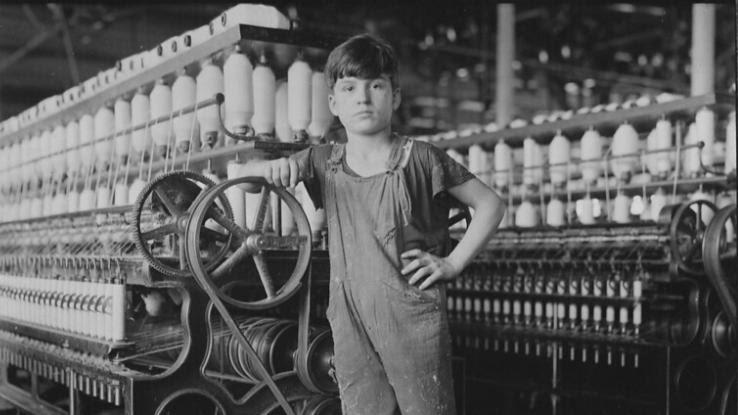
No matter how much history we study, each of us can only hope to see a small piece of the massive picture. While many history books are dedicated to highlighting a few major achievements of each era, there are millions of stories that none of us will ever hear.
Fortunately, photography has gone a long way in helping us get peeks into hidden moments from history that you’re not likely to see in your average history book.
Concentration Camp Survivors Being Freed in 1945
In April of 1945, the Allies were closing in on the Nazi-run Bergen-Belsen concentration camp. Sensing the end was near, the Germans attempted to transport out three trains, each carrying 2,500 prisoners. Along the way, they were intercepted by the U.S. 743rd Tank Battalion.
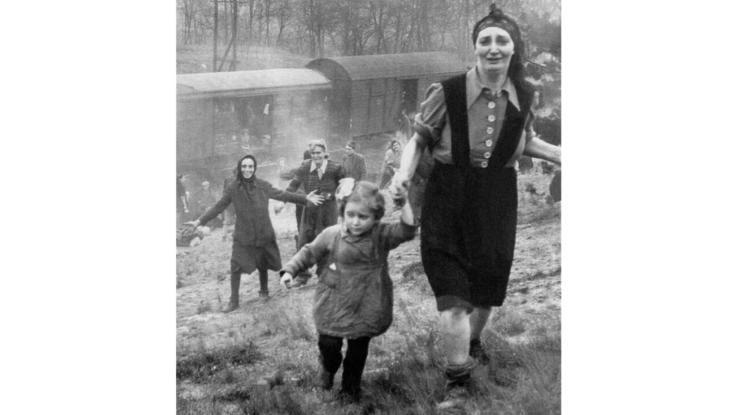
The Germans abandoned the trains, giving the Americans the ability to free the prisoners held inside. One of the prisoners later recalled, “We saw American soldiers, and one of them shouted in Yiddish, his eyes flowing with tears, ‘I’m a Jew, too.’ There was an outburst of joy that is hard to describe.”
Teddy Roosevelt Watching Lincoln’s Funeral
Perhaps one of the rarest photos in existence, this old picture features both Abraham Lincoln and Theodore Roosevelt. How is this possible? On April 25, 1865, this picture was taken of President Lincoln’s funeral procession as it moved through New York City.
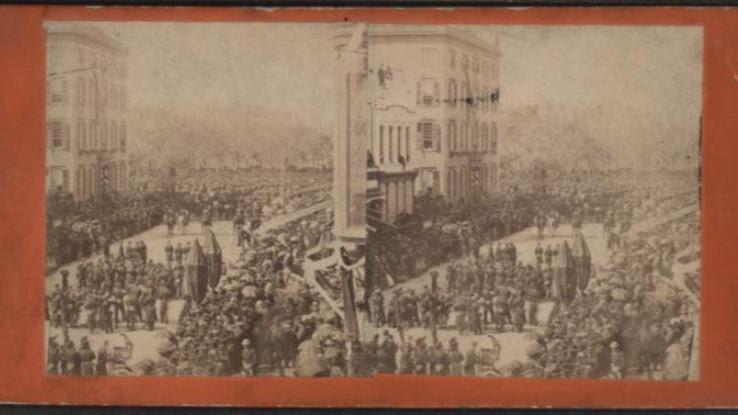
Someone with an incredibly keen eye came across it in the 1950s and recognized the house on the corner as that of Teddy Roosevelt’s grandfather. He noticed that there were two young boys in the second story window and was able to confirm that it was indeed the future president and his brother.
A Priest Conducts Mass for Irish Soldiers During the Civil War
During Ireland’s Great Potato Famine of 1845–49, a large number of Irish immigrants headed for the shores of the U.S. Consequently, an estimated 200,000 Irish soldiers fought in the American Civil War. Just 30,000–40,000 fought on the side of the Confederacy, while upwards of 150,000 fought for the Union.
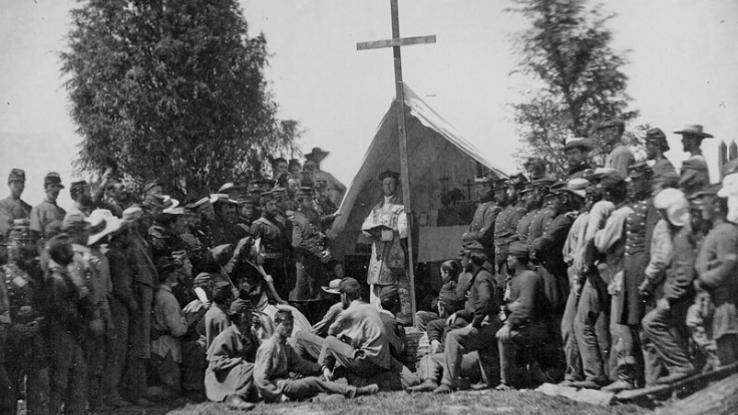
In this rare battlefield photo from 1861, a Catholic priest conducts mass in a makeshift tent for Irish Union troops. The soldiers were members of the “Fighting 69th” stationed at Fort Corcoran, Washington, D.C.
Constructing the Statue of Liberty
The French people bestowed the incredible gift of the Statue of Liberty on the U.S. in the late 1800s to commemorate a variety of things. These included the French and U.S. alliance during the American Revolution, the work of Abraham Lincoln and the ideas of democracy and freedom in general.
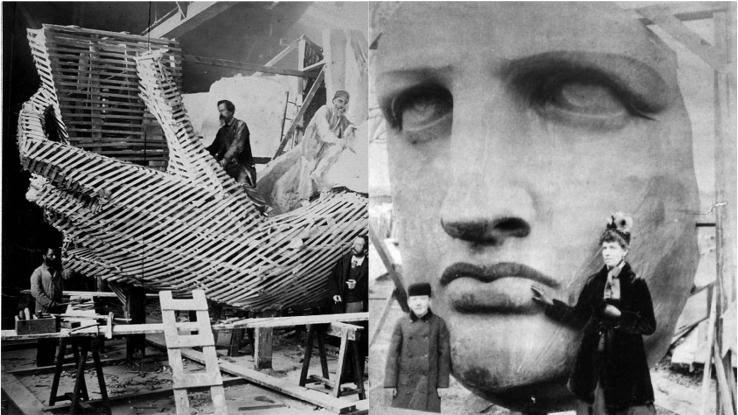
The statue was designed by French artist Frédéric Auguste Bartholdi during a time when France was still divided between monarchists and democracy supporters. Legend claims that Bartholdi modeled the statue’s face after that of his mother, who is pictured on the right.
Students at an “Indian Training School” in the 1800s
During the 19th and 20th centuries, the U.S. made a variety of attempts to “civilize” Native American children. A number of “training schools” were established, many of which had devastating effects on the native students who attended them.
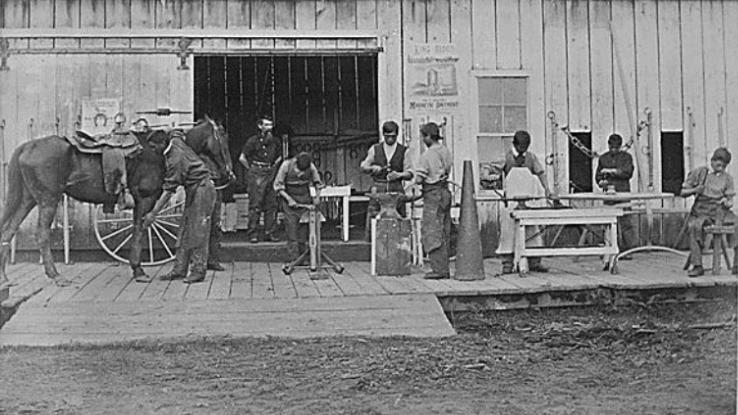
The boys seen here were educated in blacksmithing at the Forest Grove Indian Training School in the late 1800s. The students were forced to abandon their native customs and languages and adopt European-style haircuts, dress, names and speech. The schools’ military-style treatment of students left many emotionally scarred, while many others died of infectious diseases.
This Donkey Did Not Play
Who says all war heroes walk on two legs? Animals of all sorts have regularly been utilized in war, and some were even awarded medals for their efforts. Donkeys, mules and horses were often used in WWII to carry everything from soldiers to supplies and weapons.
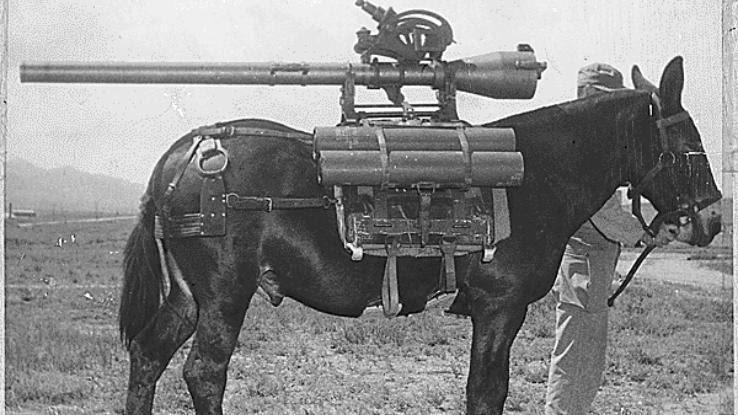
Other animals, such as dogs, were often utilized for protection as well. One canine soldier by the name of Sergeant Stubby not only captured a German spy but also went on to outrank his owner. Even dolphins and sea lions were trained to do underwater work for the U.S. Navy.
A Lone Man Refuses to Do the Nazi Salute
This photo was taken in June of 1936 and features a lone man named August Friedrich Landmesser refusing to participate in the Nazi salute. Landmesser had joined the Nazis in 1931 in the hopes of finding work but was dismissed after his engagement to a Jewish woman was discovered in 1935.
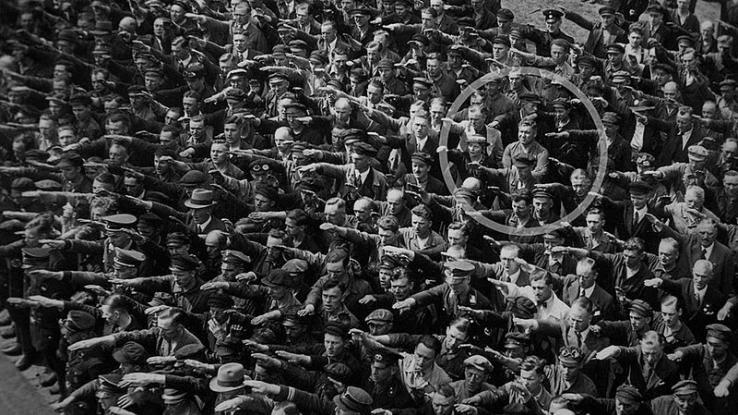
The Nuremberg Laws at the time prevented their marriage, and the couple was eventually arrested in 1937 while attempting to flee to Denmark. They were sent to different concentration camps, where Landmesser served 2.5 years, and his fiancee was killed after giving birth to their second child.
The Only Known Photo of Abraham Lincoln at Gettysburg
On November 19, 1863, Abraham Lincoln delivered a two-minute speech that consisted of just 10 sentences. It eventually became known as the Gettysburg Address and is still considered by many historians to be one of the greatest speeches in American history.
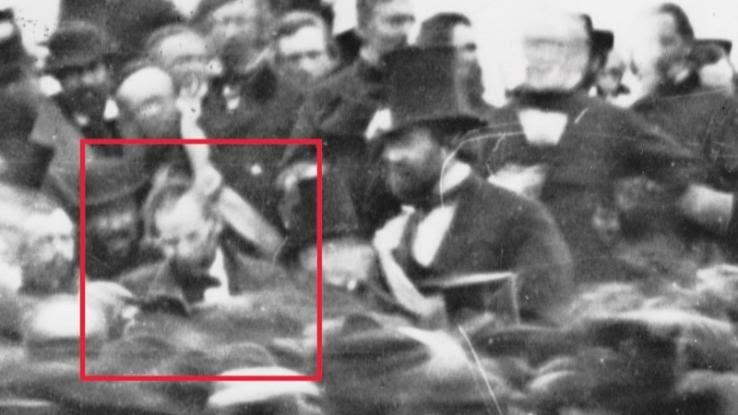
Up until the 1950s, however, no known photos of Lincoln at the Gettysburg ceremony were believed to exist. But in 1952, Josephine Cobb discovered a photo of the event in the National Archives. After a great deal of photo enlargement and zooming, this image of Lincoln amongst the crowd was discovered.
Recording the MGM Lion
While we all know “Leo the Lion,” who roars at the beginning of every MGM film, few people realize that Leo was actually seven different lions. The one in this photograph was named Jackie, and it’s his roar that appears at the beginning of The Wizard of Oz.
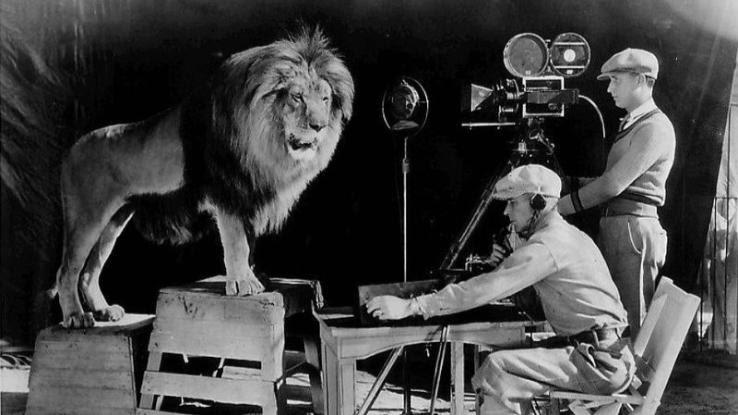
The crew recorded his famous roar separately and then put it over footage of him doing a roar for the camera. But his career definitely didn’t end there. Apart from being the MGM logo star, he also appeared in over 100 MGM movies, including several of the Tarzan films.
African-American Nurses in the U.S. Army Nurse Corps in 1944
While images of Rosie the Riveter are common reminders of the role many white women played in WWII, the significant role of African-American women is all too often overlooked. Despite living in a country that was still largely segregated in the 1940s, many Black women were willing and eager to serve.
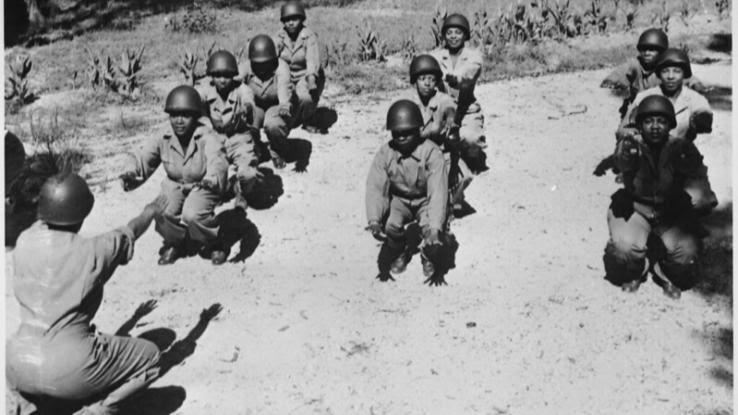
While the U.S. government put quotas on the number of Black women who could join the Army Nurse Corps, 600 managed to enlist. Due to their heroism and the later influence of Eleanor Roosevelt, the quotas for Black nurses were eventually abolished in 1941.
Helen Keller Meets Dwight Eisenhower
Activist Helen Keller may have been both blind and deaf, but she found a way to use her disabilities to help others. During WWII, Keller would visit young men in military hospitals who had been wounded in action. Not only was she able to lift their spirits, but she also received the thanks of President Dwight Eisenhower.
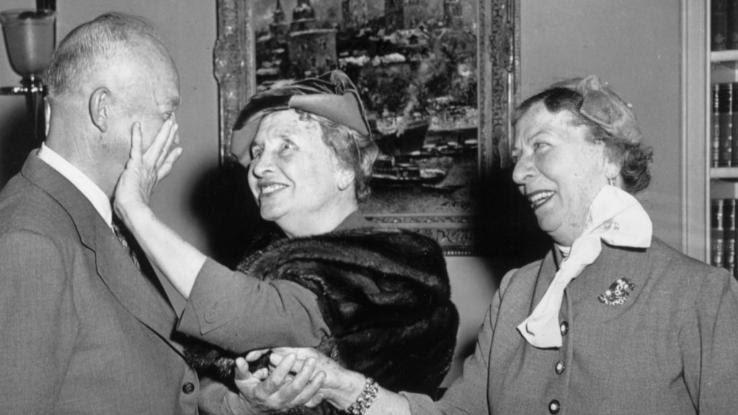
This touching photo was taken of the two when Keller asked President Eisenhower if she could “see” him. During her life, Keller’s work and courage led her to meet 13 different U.S. presidents, including JFK and Theodore Roosevelt.
Three Athletes Training for the 1896 Olympics
The first modern Olympics were held in April of 1896 in Athens, Greece, with 241 (all male) contestants from 14 different countries around the world. The men competed in 43 different events, such as the marathon, which the men in this photo were training for.
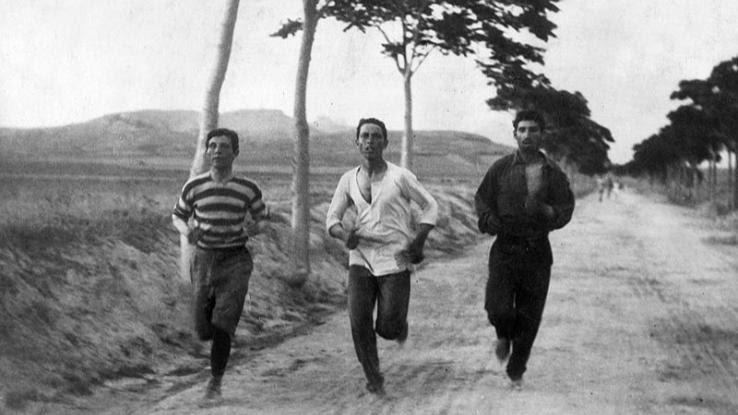
The ancient version of the games first began around 776 B.C. in Olympia, Greece, and initially consisted solely of a foot race. Between then and the last ancient Olympics in A.D. 393, the games expanded to include events such as boxing, wrestling and chariot racing, many of which contestants often competed in totally naked.
Judge Roy Bean Conducts Court in His Wild West Saloon
There were few Wild West characters quite as colorful as Judge Roy Bean. Bean was appointed the sole judge of a remote region of Texas in the 1800s, even though he had no actual legal experience. He often held “court” in the saloon he owned, selecting his favorite bar patrons to serve as his jury.
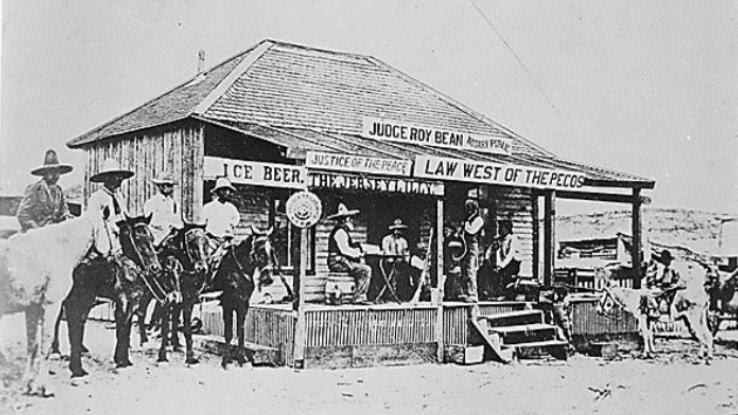
He purposely spread rumors that he was a “hanging judge” even though he never actually hanged anybody at all. He did stage a few fake hangings, however, in a largely successful effort to keep would-be criminals in line.
Child Survivors of the Bergen-Belsen Concentration Camp
During the devastation of WWII, an estimated 3,500 children were imprisoned in the Bergen-Belsen concentration camp between 1943 and 1945. Somewhere between 600 and 800 imprisoned children under the age of 16 died in the camp, including Anne Frank and her sister, Margot.
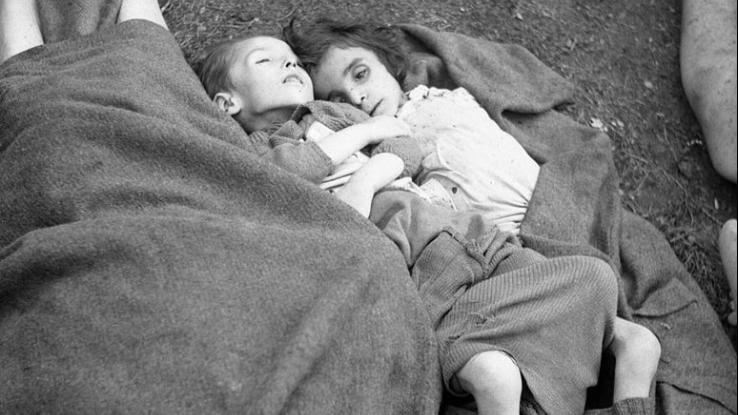
When the camp was liberated in April of 1945, 500 children were found alive, while the others were freed on trains or from other camps they had been relocated to. Due to the unspeakable conditions in the camp, many of the children were on the brink of death and had to be hospitalized immediately.
Geronimo With a Group of Fellow Chiricahua Apache Prisoners
Among the Chiricahua Apache prisoners pictured here is the famous Apache leader and medicine man, Geronimo (third from the right on the first row). After becoming famous for his fearless raids on those who sought to remove his people from their tribal lands, the Native American hero finally surrendered in 1886.
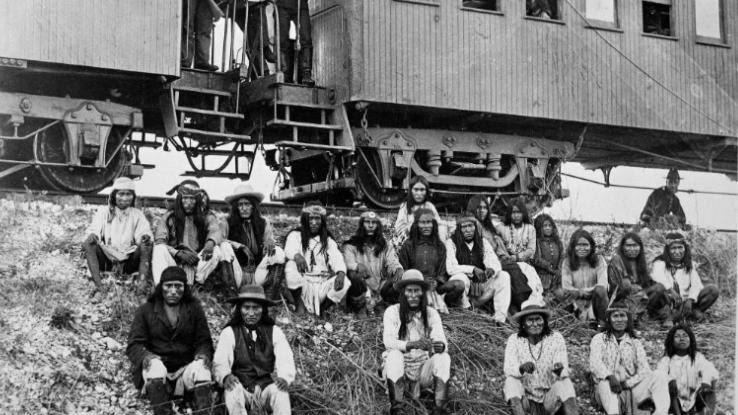
He and many other Apache warriors were sent to Florida by train, where they were held as prisoners of war until 1888. It was then that they were finally reunited with their families in Alabama and later relocated to Oklahoma in 1894.
An American Anti-Suffrage Union in 1919
While some of us take voting for granted today, it’s important to remember that American women didn’t even have the option until 1920. While many suffragette unions were incredibly well organized, unfortunately, many anti-suffrage unions were as well. Ironically, even some women were prominent anti-suffrage supporters.
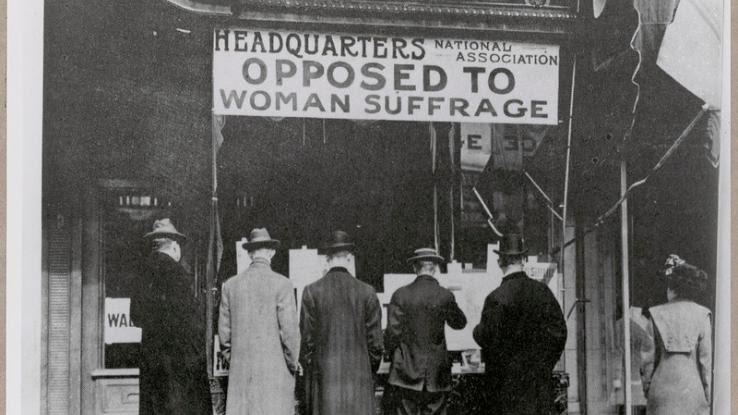
Some of these women feared that the right to vote would come at too large a price and that men would no longer be expected to provide for them. Others detested the idea of serving on juries. Eventually, however, suffrage proved to be a significant step forward for women’s equality.
Woman Waiting to Be Taken to a Japanese Internment Camp
WWII was not an easy time to be a Japanese-American. After the Japanese attack on Pearl Harbor in 1941, rumors began to fly that some Japanese people living in America had somehow helped plot the attack.
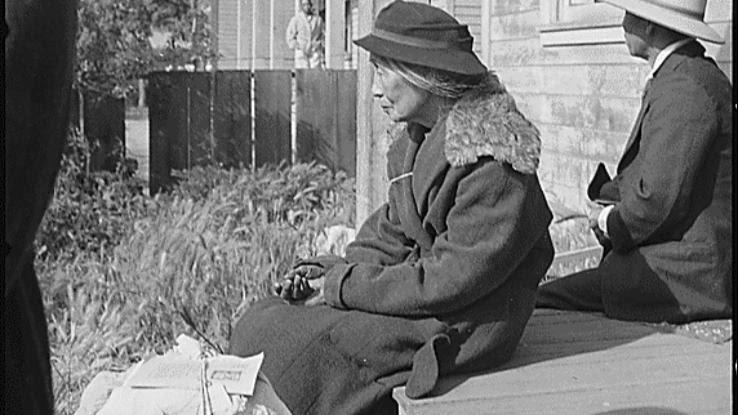
Though such rumors were completely unfounded, the U.S. government went into panic mode and ordered that all citizens of Japanese ancestry be relocated to “internment camps.” Between 110,000 and 120,000 Japanese-Americans, such as the grandmother pictured above, were forced to relocate into prison-style encampments until 1946. The relocations were mandatory, even for those born in America.
Child Laborer Looking Out a Factory Window in 1908
While the Industrial Revolution brought about plenty of change, it also had a devastating effect on many children forced into child labor. In the year 1900, it was estimated that 18% of the American workforce was made up of children below the age of 16, all of whom worked long hours for little pay.
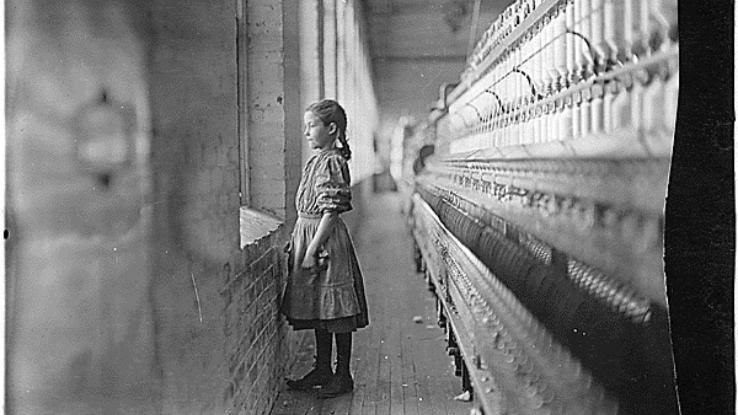
In 1904, the National Child Labor Committee was formed to send out investigators, such as photographer Lewis Hine, to investigate child labor conditions. Hine’s heartbreaking images, such as this 11-year-old girl staring out the window of a spinning factory, eventually helped to enact change.
The “Human Squirrel” Scaling an NYC Skyscraper During WWI
During the course of WWI, many Americans at home were called upon to help support the war effort in any way they could. While not everyone was able to fight on the front lines, everyday Americans did their part by rationing goods, working in arms factories and purchasing war bonds.
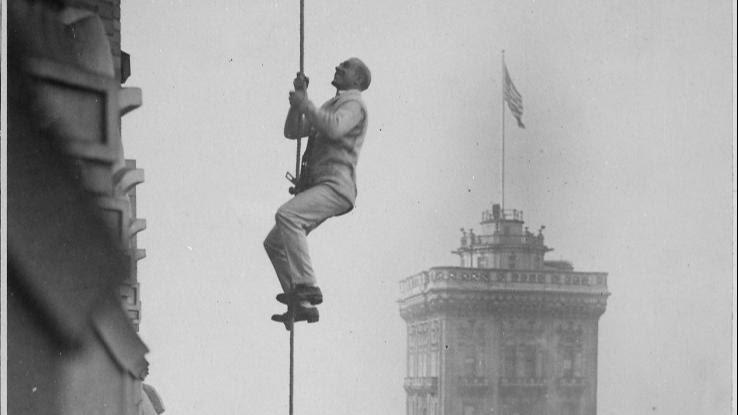
This guy came up with a creative, though incredibly nerve-wracking, way to support War Relief funds in 1918. Known as the “Human Squirrel,” he performed all sorts of insane stunts, such as climbing up a rope attached to a skyscraper in Times Square.
Wounded Soldier During the American Civil War
This wounded soldier, who can be seen resting in an abandoned camp, was just one of many subjects photographed by Mathew Brady during the American Civil War. Among the greatest photographers of the 19th century, Brady’s work cemented his historical legacy as the “father of photojournalism.”
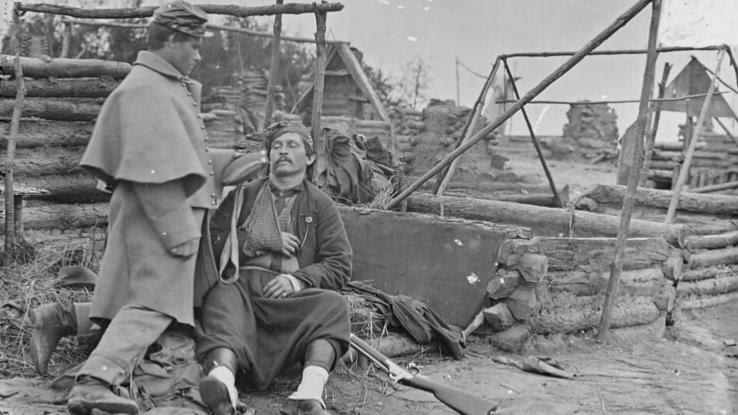
Brady was among the first photographers in history to use his skill with a camera to help bring the public firsthand accounts of what was happening on the front lines during the war. He produced over 10,000 photo plates during the Civil War alone.
A Young Newsie in 1910
Around the turn of the century, children were expected to grow up incredibly fast in order to help raise money for their families. While many children in rural states were expected to help out around their family farms, kids in urban areas had to look for different sorts of work.
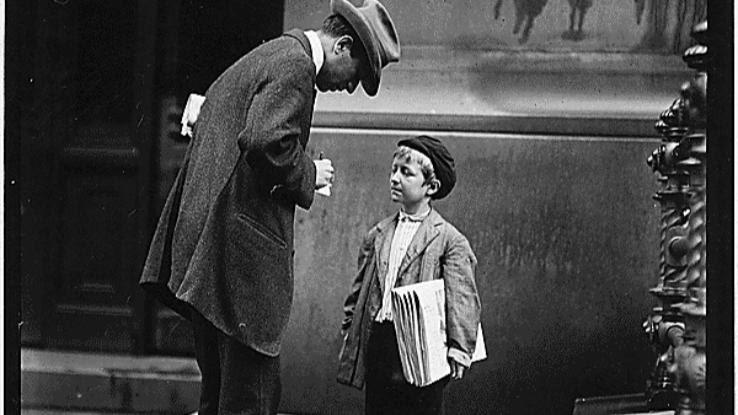
While selling newspapers may seem better than being a factory worker, it wasn’t without its perils. Michael McNelis, the boy pictured here in 1910, was found selling papers during a huge rainstorm just days after recovering from his second bout of pneumonia.
Santa Claus Visits Chicago in 1902
This mildly terrifying street Santa doesn’t look a lot like the jolly fellow we all know and love today. Surprisingly, Santa’s classic red outfit and plump figure weren’t always as standard as they’ve become. Santa was actually pretty thin in some of his earliest incarnations.
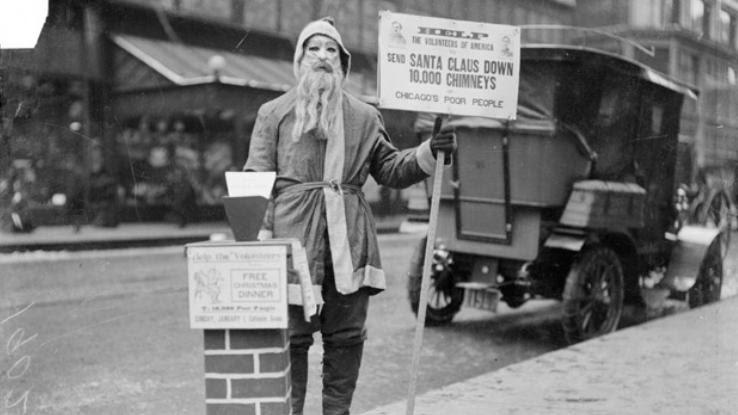
Santa began to fatten up a bit in early sketches made of him in the 1800s, some of which featured him being a bit strict. It wasn’t until the 1920s, however, that none other than Coca-Cola began marketing him as the large, loving man in red that we know him as.
A Llama Cruises NYC in 1957
This little lady isn’t just any llama, but Linda the Llama, star of the small screen. She was snapped here by the famed photographer Inge Morath back in the 1950s as part of an assignment for LIFE magazine. The article in which Linda was featured was aptly named “High-paid llama in the big city.”
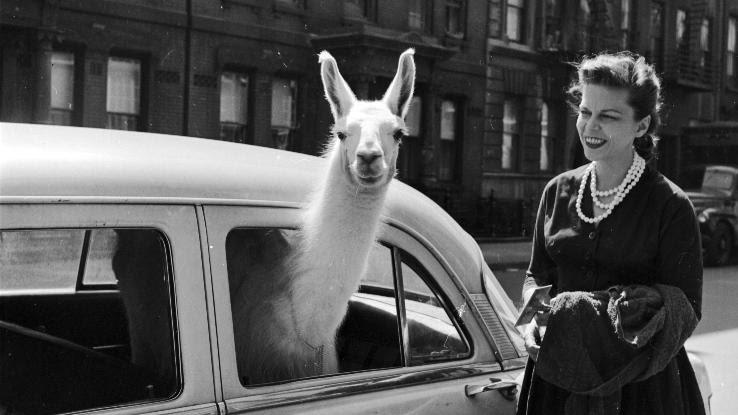
The piece was part of LIFE’s animal section and recounted the tales of a variety of animals trained to “act” in television shows. Some of the other animal actors the article highlighted were cats, dogs, a pig and even a miniature bull.
Elizabeth Eckford Integrating Into an All-white School in 1957
It can be easy to forget that amid the birth of rock ‘n’ roll, racism was still alive and well in America during the 1950s. It wasn’t until 1954 that Brown vs.The Board of Education ruled that racial discrimination in schools was unconstitutional.
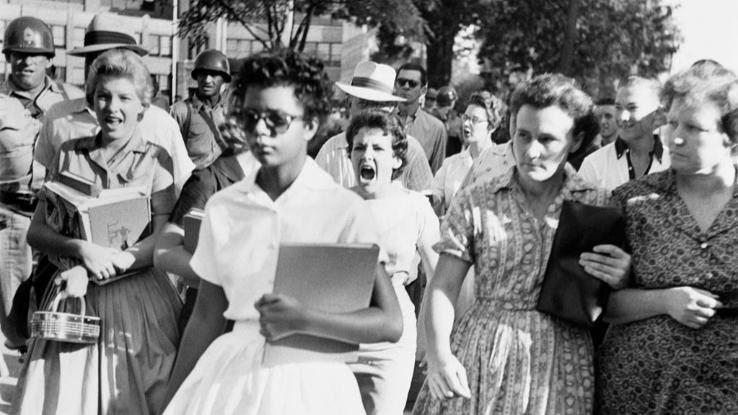
In 1957, Elizabeth Eckford and a group of eight other students known as the “Little Rock Nine” enrolled in Little Rock, Arkansas’, all-white Central High School. When the governor sent the Arkansas National Guard to prevent the students from entering the school, President Eisenhower had to send federal troops to escort students in.
A Young Boy Watches Televised Images of the Moon’s Surface
Though man didn’t actually walk on the moon until 1969, the Ranger missions of 1961–65 were able to give the world its first glances of the lunar surface. A series of Ranger spacecrafts was equipped with cameras designed to beam photos of the moon’s surface back to Earth immediately before the crafts crashed into it.
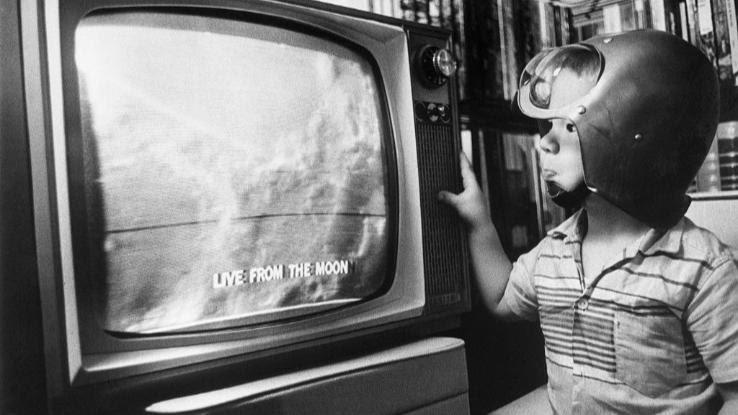
Here, a young boy named Jay Bodnar watches televised photos taken by Ranger 9 moments before it crashed into a large crater. Needless to say, space fever was running high as the world prepared for the moment that humans would actually walk on the moon.
Wife of Apollo 13 Astronaut James A. Lovell
When Apollo 13 was launched in April of 1970, it was meant to be the third crewed spacecraft to land on the moon. As we all know from the famous Tom Hanks movie, however, things went horribly wrong two days into the mission, causing it to be aborted.

This photo shows Marilyn Lovell, the wife of Apollo 13 astronaut James A. Lovell, listening to a broadcast that detailed the dangers the crew was facing on their journey home. Thankfully, the crew made it home safely on April 17, 1970, and were awarded the Presidential Medal of Freedom.
Soldiers and Their Mule in WWI Gas Masks
During WWI, chemicals like chlorine and mustard gas were weaponized in attempts to defeat enemy troops. It’s estimated that chemical weapons killed around 90,000 soldiers throughout the war, and many more were left with severe health impairments.
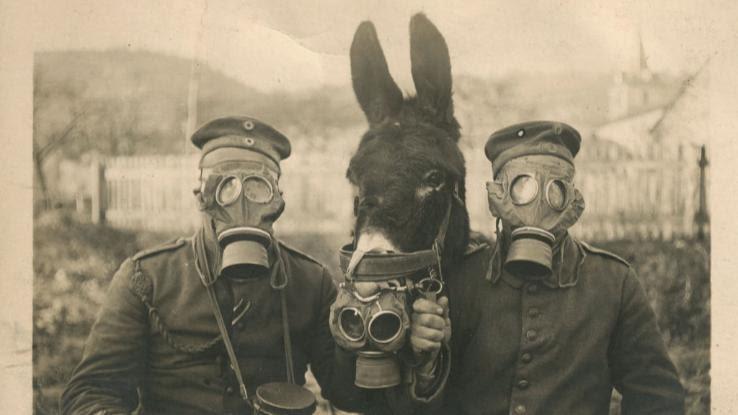
Eventually, gas masks were developed for horses, dogs, mules and other animals serving on the front lines. It was even discovered that slugs could detect mustard gas and would alert soldiers by compressing their bodies temporarily. Given that the slugs could survive the ordeal, many were used to serve as gas detectors.
Queen Elizabeth II Cracking Up President Reagan During a Speech
As the world’s longest-reigning monarch, Queen Elizabeth II has met with 12 American presidents, from Truman to Trump. Among her favorites was said to be Ronald Reagan, whom she visited at his ranch in 1983 in the hopes of going horseback riding.
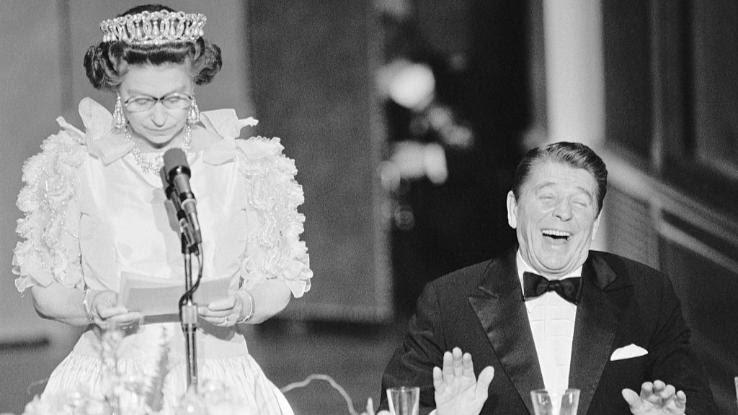
During the speech she’s pictured giving here, she reprimanded the “lousy California weather” that forced them to settle for a ride on the royal yacht Britannia instead. The Reagans went on to enjoy a friendship with the Queen, who awarded Reagan with an honorary knighthood in 1989 for his assistance in the Falkland Wars.
Al Capone’s Depression-era Soup Kitchen
When the Great Depression hit the United States right around the beginning of the 1930s, times immediately got a lot tougher for many people around the country. Between the great stock market crash of 1929, bank failures and drought, the country’s economy spiraled into a downfall that lasted until WWII.
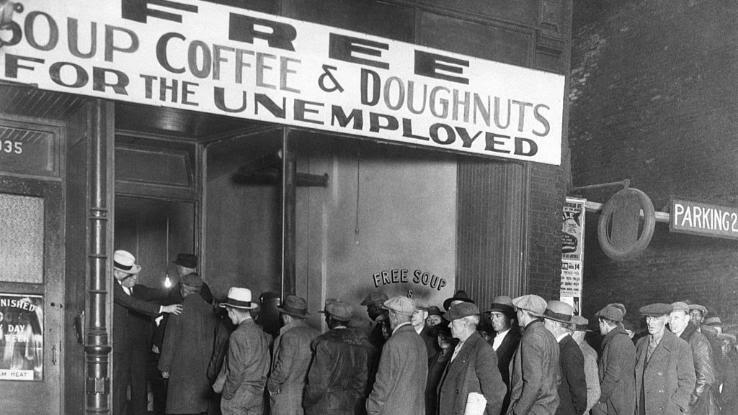
With one in five Americans unable to find work, even the hardest hearts appear to have been softened. The men here stand in line for a soup kitchen in Chicago that was run by the notorious gangster, Al Capone.
A Woman and Her Dog Get Matching Waves in 1920
Never let it be said that great hair is for the faint of heart. While it may appear that this woman and her dog are undergoing some sort of bizarre government experiment, the truth is far more innocent. The pair had simply taken a trip to Marion’s Beauty School in New York back in the roaring ’20s.
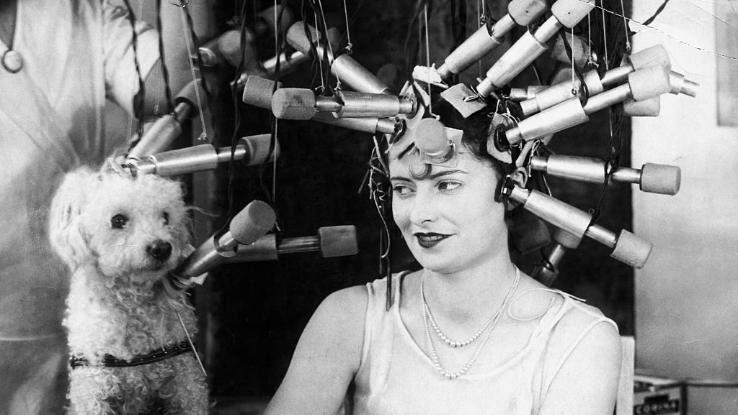
Miss Agnes O’Laughlin, the proud pooch owner pictured, was out to get some killer waves, which was no easy task back then. She’d brought along her poodle Bubbles and figured that she might as well treat her pup to a matching ‘do.





